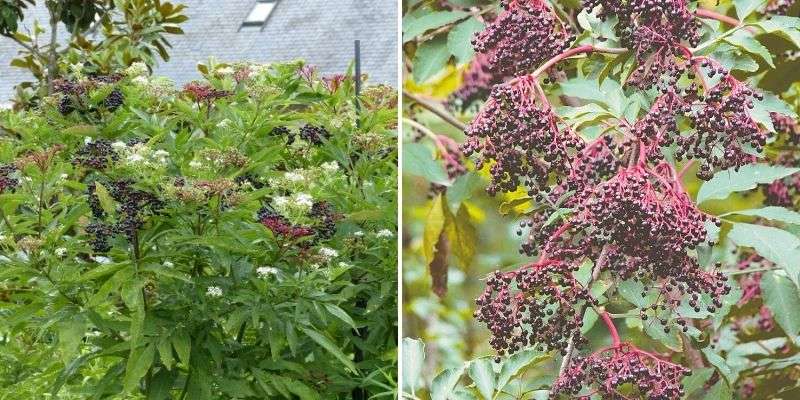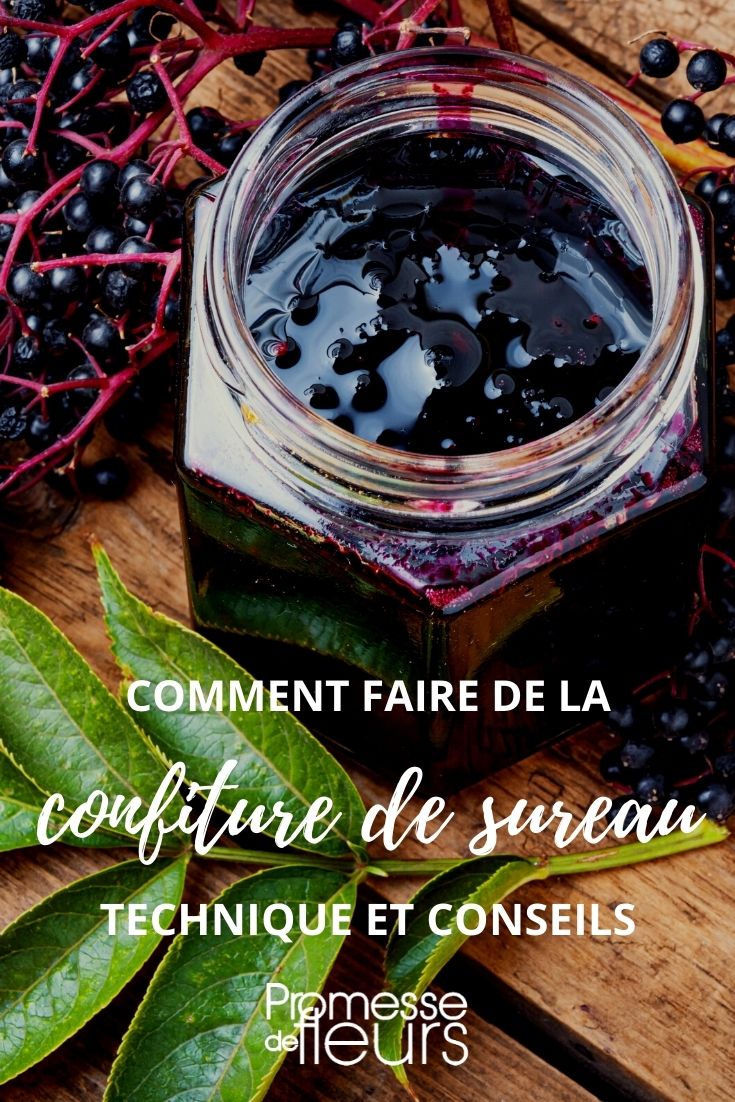The elder bush, Sambucus nigra in Latin, is a wild and very common bush in our regions that has many advantages, both in the garden and in the kitchen with its flowers and berries.
Discover a delicious elderberry jam made from the fruits, grouped in trailing clusters. Be careful: the dwarf elder, with its upright corymbs, is toxic.
When and How to Harvest Elderberries?
In summer, the elder flowers give way to fruits, small green then black berries gathered in corymbs. To harvest them, you will need, depending on the year, to start more or less early, from mid-August to September in general. Choose the corymbs with as many ripe berries as possible (the blackest ones). If the berries on the elder you are targeting seem ready to be harvested, don’t delay too long, as birds are very fond of them and will quickly come to "plunder" the bush.
The elder is a very common pioneer bush, in the countryside as well as in urban areas, especially along roads and paths. Therefore, also exercise caution and avoid areas with heavy car traffic and field edges that may have been treated to avoid pollution and ensure the best possible quality of the fruits.
When you pick the corymbs, don’t worry too much if not all the berries are perfectly ripe. You can always sort them out later in your kitchen.
Finally, a practical detail: elderberries have strong staining power. This can be useful if you are into natural dyeing. However, it also means taking a few "precautionary measures" during harvesting to avoid ending up with stained clothes. Opt for garments that don’t mind stains.

Sambucus nigra: flowers in corymbs and black berries at ripeness
Which Varieties Are Suitable for Jam?
In theory, all elders are edible after cooking. Except, of course, the dwarf elder, Sambucus ebulus, which is toxic.
Ornamental varieties of the elder bush, while they can be consumed cooked, generally produce less tasty and fewer fruits.
I can only strongly advise you to opt for an elder bush, whether the common type species Sambucus nigra or selections of it made to increase productivity. In this category, you will mainly find Austrian varieties, as the use of elder in cooking is indeed much more widespread in Central Europe.
- The common elder bush, Sambucus nigra, is a vigorous pioneer bush. It may even already be present in your garden. It has good productivity.
- The elder Sambucus nigra Korsor is perfectly suited for making jam. In addition to its vigour, it has the advantage of producing large, sweet-tasting fruits.
- The elder Sambucus nigra Hashberg is very productive, and its fruits have a very beautiful colour, hence its use as a food colourant. However, its berries are said to be slightly less tasty than those of Korsor.
Now it’s up to you to choose the one you prefer to plant in your garden.
And know that the berries left on the tree won’t go to waste. You’ll have the pleasure of seeing many bird species come to feed on them.

Left: the toxic Sambucus ebulus with its upright fruits, not to be consumed; right: Sambucus nigra 'Hashberg' with its trailing fruits (photo Pixabay)
Recipe
Ingredients
- 1kg of sugar
- 1kg of elderberries
The amount of sugar is important; it ensures good preservation of the jam.
If you prefer a less sweet taste and plan to consume your jars quickly, you can slightly reduce the amount of sugar, but don’t be too drastic. Keep in mind that elderberries have a very tangy flavour. The fruit’s taste will then be more pronounced, and the jam will be runnier.
While the recipe seems simple, preparing the berries required for it is quite time-consuming and tedious.
Preparation
The day before:
- First, quickly rinse the corymbs under water;
- Then, remove the berries from the clusters using a fork, and discard any that aren’t ripe enough; they can be identified by their still slightly purple colour. Ripe berries are also soft to the touch. But be careful: if overripe, they dry out;
- Weigh the selected berries and pass them through a vegetable mill to remove the seeds and keep only the juice and pulp of the fruits;
- In a copper jam pan, or failing that, a large stainless steel saucepan, pour the crushed berries and then the sugar.
Now, all you have to do is cover your preparation and wait until the next day. This resting period will allow the sugar to penetrate the fruit well and facilitate the evaporation of water during cooking.
While it’s possible to skip this resting step and cook the sugar-fruit mixture directly, it is recommended for the reasons mentioned above. Especially since elderberries contain relatively little pectin, this will help the jam set.
On the day of cooking:
- Bring the contents of the pan to a boil, then reduce the heat slightly, and simmer gently for 45 minutes, stirring and skimming regularly.
- Pour the jam into jars while it’s still hot, seal them, and turn them upside down to create a vacuum. Once the jars have cooled, you can turn them right side up and store them.
Finally, remember to sterilise your jam jars beforehand. To do this, boil them for about ten minutes in a large saucepan of water.

Important step: sorting the berries (photo Isabell Schulz - Flickr). Remember to cool your jars upside down (photo storebukkebruse - Flickr)
To Add Variety
- You can also add peeled and thinly sliced apples using a mandoline, about 500g of apples.
- I sometimes add a squeeze of lemon juice.
































Comments